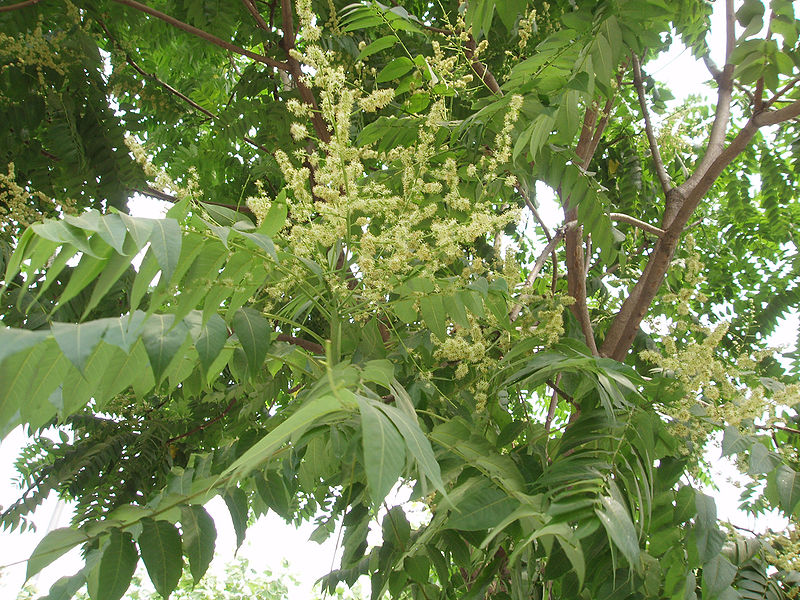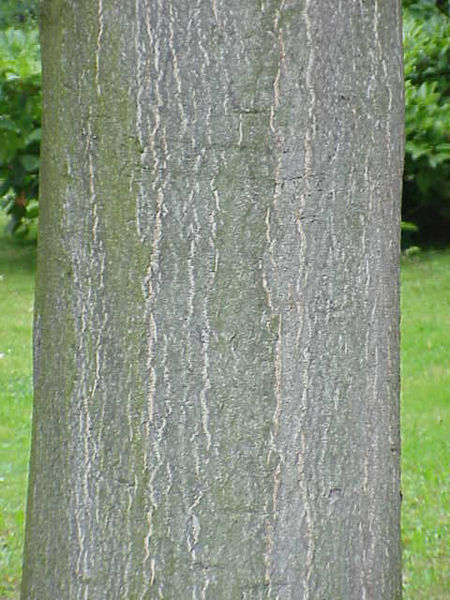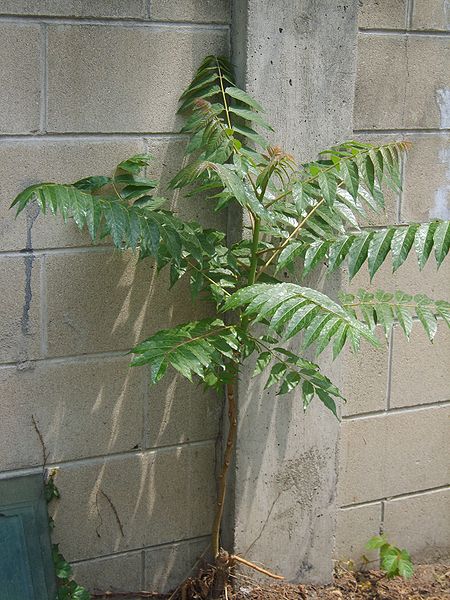In its native country, the tree of heaven (Ailanthus altissima) is commonly called “chouchun,” which is literally Chinese for “foul smelling tree.” When it first came on the scene in North America in 1784, it quickly went from “pretty tree” to “annoying pest”. But somehow its hardy characteristics outweighed the negatives, because it continued to be planted as a street tree until the end of the 19th century (we really never learn when it comes to introducing foreign species, do we?)

As a seedling, tree of heaven can easily be mistaken for black walnut or staghorn sumac due to its compound leaves (many leaflets attached to one main leaf stem). As it grows older the similarities begin to fade. Tree of heaven keeps its youthful smooth bark, but develops white-yellow “stretch marks” across its trunk as it ages. In late spring the female tree develops yellow-green flowers that are very fragrant – whether that scent is a good or bad falls to you to decide.

By early winter the flowers turn to beige coloured seed – up to 350,000 can be produced per season. Each seed can grow into a seedling that can put on three to four feet in height per year, adding to the thicket of suckers a mature tree can put out from its own roots. In this case, the “apple” definitely does not fall far from the tree. For these reasons the tree of heaven is listed as a Category 2 invasive species in Ontario, which means it spreads aggressively within a certain area, but does not spread extensively.
Want to make sure you don’t have one of these pests lurking in your backyard? If you think that you might, take a leaf and crush it. Does it smell like peanut butter? How about burnt popcorn? I know that these two are nothing alike, but they both commonly come up when people come to identifying a tree of heaven. Now look up in the branches – once they reach ten years of age, black walnuts will have small green fruit growing even early in the season. Staghorn sumac will produce a red berry-like fruit later in the fall and grow much shorter than their “look-a-likes”.

In some cases, these trees are the only thing that can grow – they can be found in alleyways and on the edges of parking lots - and it’s always better than no tree at all. If you do have a small seedling in your yard – yank it out! And then plant something NATIVE in its place that will flourish and shade out any competitors. Keep an eye out for our monthly tree species profiles to help you figure out what tree you’ll love, and then contact us to book a consultation with one of our arborists!
Join me next month when I explore the life history of the sweet, syrupy black maple – can you tell it apart from a sugar maple?
